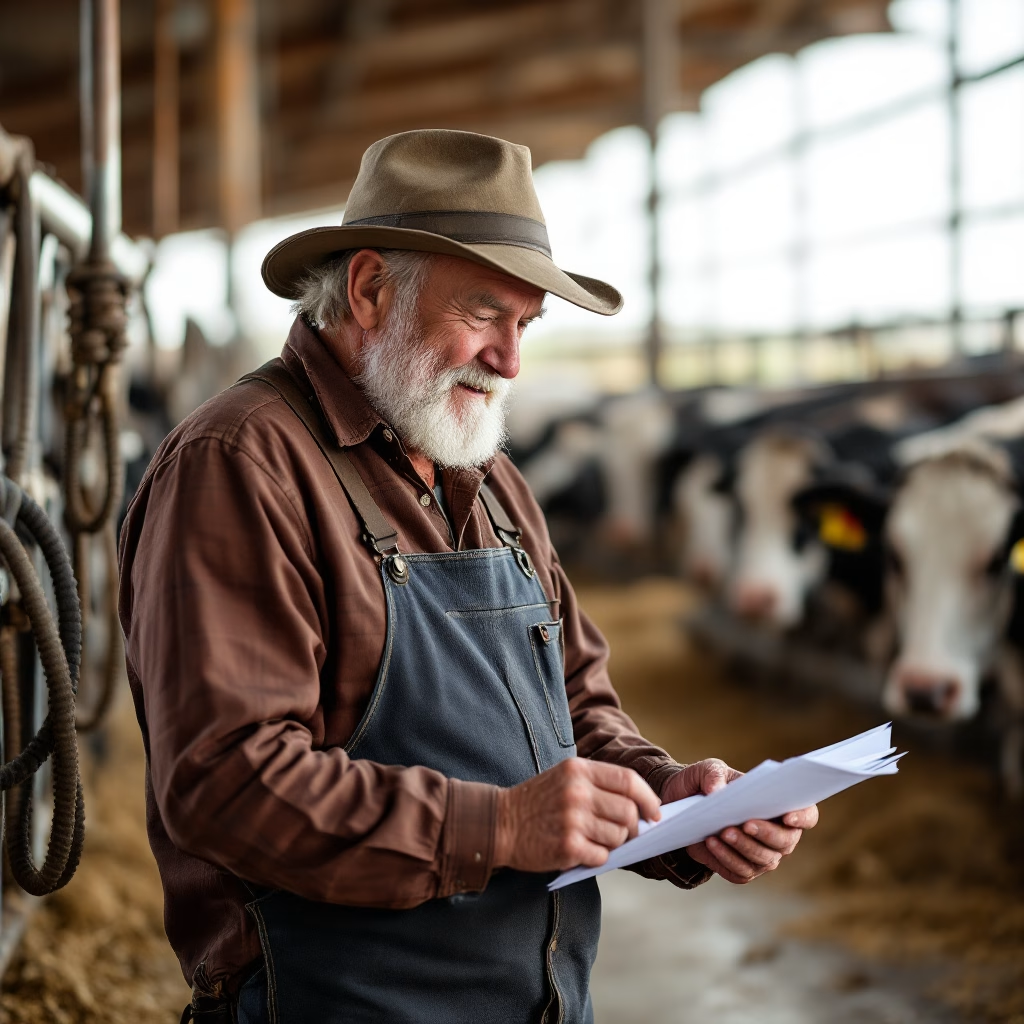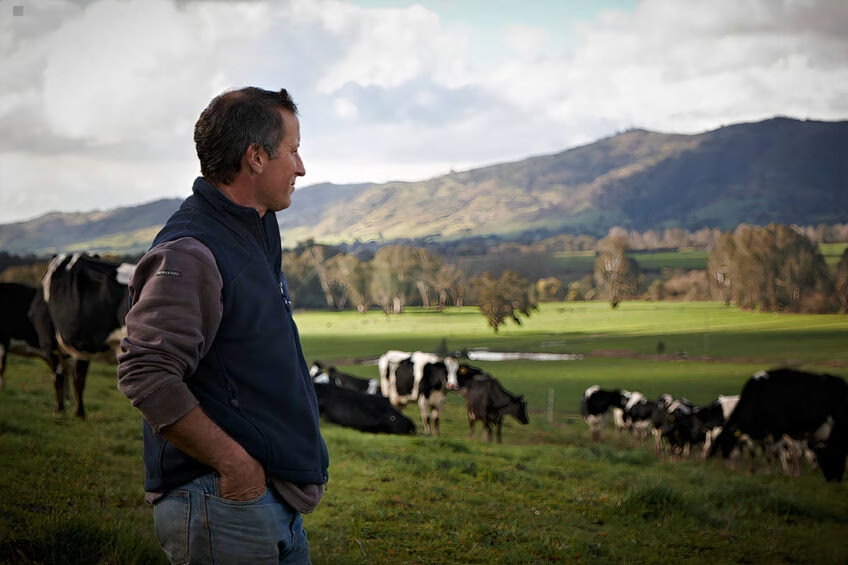55% of Australian dairy farmers eye exit as rising costs, mental health crises, and climate chaos collide. A Curtin University study reveals 35% fewer farms since 2012, with suicide rates 60% above national averages. Can subsidies and innovation stem the tide—or is dairy’s survival at stake?
Summary:
The Australian dairy industry faces significant challenges as more farmers are considering leaving due to high costs, mental health issues, and climate change. A study shows that 55% of farmers are unhappy, struggling with rising feed, labor, and fertilizer costs while milk prices stay unchanged. Farmers are working over 70 hours a week, leading to severe mental health issues and a higher risk of suicide. Despite these problems, not many see climate change as a threat, even though it affects operations. Most farmers face barriers like older age and emotional ties to their land. Immediate actions like financial support and mental health aid are needed to save this vital industry.
Key Takeaways:
- High dissatisfaction among dairy farmers due to increasing operational costs and mental health issues, risking the future of the Australian dairy industry.
- Farmers are grappling with significant financial pressures from soaring feed, labor, and fertilizer expenses, exacerbated by milk price stagnation.
- Mental health impacts are profound, with many farmers facing isolation and stress yet limited access to mental health resources.
- Climate volatility, while a lesser immediate concern for some, significantly impacts crop yields and operational stability.
- Strong emotional ties and land suitability tether many farmers to dairy farming despite financial and environmental challenges.
- Policy interventions such as subsidies and regenerative grants are critical for the industry’s viability and addressing farmers’ immediate and long-term needs.
- The balance between tradition and innovation is essential, as emerging technologies and practices offer pathways to sustainability.
- Youth Exodus: Under-35 Farmers Now Just 6%

“Feed costs up 40% since 2022. With milk prices stagnant, 89.8% of farmers face unsustainable margins.” Curtin University Study
According to a comprehensive study conducted by Curtin University involving 147 Australian dairy farmers, 55% of the surveyed farmers expressed dissatisfaction with the industry. Rising costs, mental health crises, and climate disruptions drive a historic exodus of farmers from the industry. As farm numbers have plummeted 35% since 2012, stakeholders warn the trend threatens Australia’s $4.6 billion dairy sector and global supply chains.
Financial Squeeze: “We’re Treading Water”
- Who: Australian dairy farmers
- What: 89.8% report unsustainable feed, labor, and fertilizer costs
- When: 2023–2024 study period
- Where: Victoria, NSW, Tasmania (64.6% of respondents)
- Why: Milk prices lag 22% behind input cost inflation since 2022
Aged 55–64 and managing 381 cows on average, farmers face a perfect storm:
- Feed costs up 40% since 2022 (Victorian Dairy Commission)
- Labor shortages plague 70% of farms, forcing 80-hour work weeks
- 58.5% of large herds (700+ cows) require urgent subsidies to survive
“Milk prices haven’t kept up. We’re treading water,” says a NSW farmer.
| herd size | % needing urgent subsidies | avg. debt per farm (aud) |
|---|---|---|
| <150 cows | 18% | $850,000 |
| 151–300 cows | 27% | $1.1m |
| 301–500 cows | 34% | $1.4m |
| 501–700 cows | 58% | $1.8m |
| >700 cows | 85% | $2.2m |
| source: curtin university study (2024), dairy australia in focus 2023 | ||
Mental Health: The Silent Herd Crisis
| Stressor | % Farmers Affected | Avg. Concern (1–10) |
|---|---|---|
| 70+ hour weeks | 72.8% | 8.7 |
| Debt from milk prices | 68% | 9.1 |
| Droughts/floods | 64.6% | 7.5 |
| Labor shortages | 70% | 8.3 |
| Source: Curtin University Study (2024) | ||
69% report mental health impacts on families, with suicide rates 60% higher than non-farmers (National Rural Health Alliance). Isolation worsens due to consolidation, resulting in a 35% reduction in farms since 2012 and larger herds.
Key stressors:
- 70+ hour weeks (72.8% of farmers)
- Debt from stagnant milk prices ($0.45/L farmgate vs. $1.20 retail)
- Climate disasters: 64.6% rank droughts/floods as a top concern
“My husband’s in his 30s but looks 50,” shares a Victorian dairy manager.
Resource Gap: Less than 10% of farmers can access rural mental health services.
Lifeline Australia: 13 11 14
Climate Challenges and Realistic Solutions
| Region | 2024 Fodder Loss | Milk Yield Drop | GHG Emissions (t CO2-e/yr) |
|---|---|---|---|
| Victoria | 30% | 12% | 1,450 |
| New South Wales | 25% | 9% | 980 |
| Tasmania | 18% | 6% | 620 |
| South Australia | 42% | 15% | 1,890 |
Source: Bureau of Meteorology (2024), Curtin University Study
While dairy contributes 3% of Australia’s GHG emissions (vs. NZ’s 48%), only 36% of farmers view climate as a business threat. Instead, they prioritize:
- Fodder security: Droughts cut hay yields by 30% in 2024 (BOM)
- Adaptation: 42% use mixed farming (dairy + beef) to stabilize income
- Soil health: Regenerative trials cut fertilizer use by 18%
“We’ll always prioritize cows over tractors,” insists a Tasmanian producer.
Exit Barriers: “It’s in Our Blood”
| Factor | Farmer Perspective | Industry Solution |
|---|---|---|
| Land suitability | 64% tied to dairy-specific soil | Tax breaks for agro-tourism |
| Emotional ties | “Farming isn’t just a job—it’s our story.” | Mentorship for new entrants |
| Aging workforce | 57.8% over 55; 20% exit likelihood over 60 | Youth apprenticeships |
Diversification wins:
- Robotic milking cuts labor needs by 40%
- Cover crops improve soil nitrogen by 22% in WA trials
Policy Crossroads: Subsidies or Bust?
Farmers demand:
- Feed/energy subsidies mirroring EU’s Common Agricultural Policy
- Mental health partnerships embedding counselors in rural towns
- Regenerative grants for methane-reducing feed additives
“Help us make dairy viable, or give us exit paths that don’t bankrupt us.” — Gippsland farmer.
The Bullvine Bottom Line
Australian dairy farmers are at a pivotal juncture where financial strain, mental health crises, and climate pressures collide to threaten the industry’s survival. A Curtin University study reveals that 55% of farmers are dissatisfied with rising costs, stagnant milk prices, and 70-hour workweeks, eroding viability. Mental health impacts—linked to a 60% higher suicide risk—and climate-driven disasters like droughts and floods compound the crisis. At the same time, emotional ties to land and legacy create complex barriers to exit.
The answer to why farmers are quitting lies in this trifecta of challenges: unsustainable economics, unaddressed well-being, and climate volatility, exacerbated by an aging workforce and policy gaps. Without urgent action, Australia risks losing not just farms but rural communities and global market shares to alternatives like plant-based proteins and precision fermentation.
Call to action: Industry leaders must prioritize cost-sharing models and mental health partnerships. Policymakers must bridge the subsidy gap with EU-level support for feed, energy, and regenerative practices. Farmers should explore diversification—from agrotourism to robotic milking—to future-proof operations.
Your move: Can tradition and innovation coexist in Australian dairy? What solutions would you implement? Share your insights below—the sector’s survival depends on bold ideas and collective action.
Learn more:
- Why 80% of U.S. Dairy Farms Are Struggling: An Insider’s Look at the Unseen Challenges
- Essential Tools to Save Lives: Mental Health Resources for Dairy Farmers
- Australia’s Dairy Farmers Struggle as Major Processors Slash Milk Prices by 15%
 Join the Revolution!
Join the Revolution!
Bullvine Daily is your essential e-zine for staying ahead in the dairy industry. With over 30,000 subscribers, we bring you the week’s top news, helping you manage tasks efficiently. Stay informed about milk production, tech adoption, and more, so you can concentrate on your dairy operations.







 Join the Revolution!
Join the Revolution!





